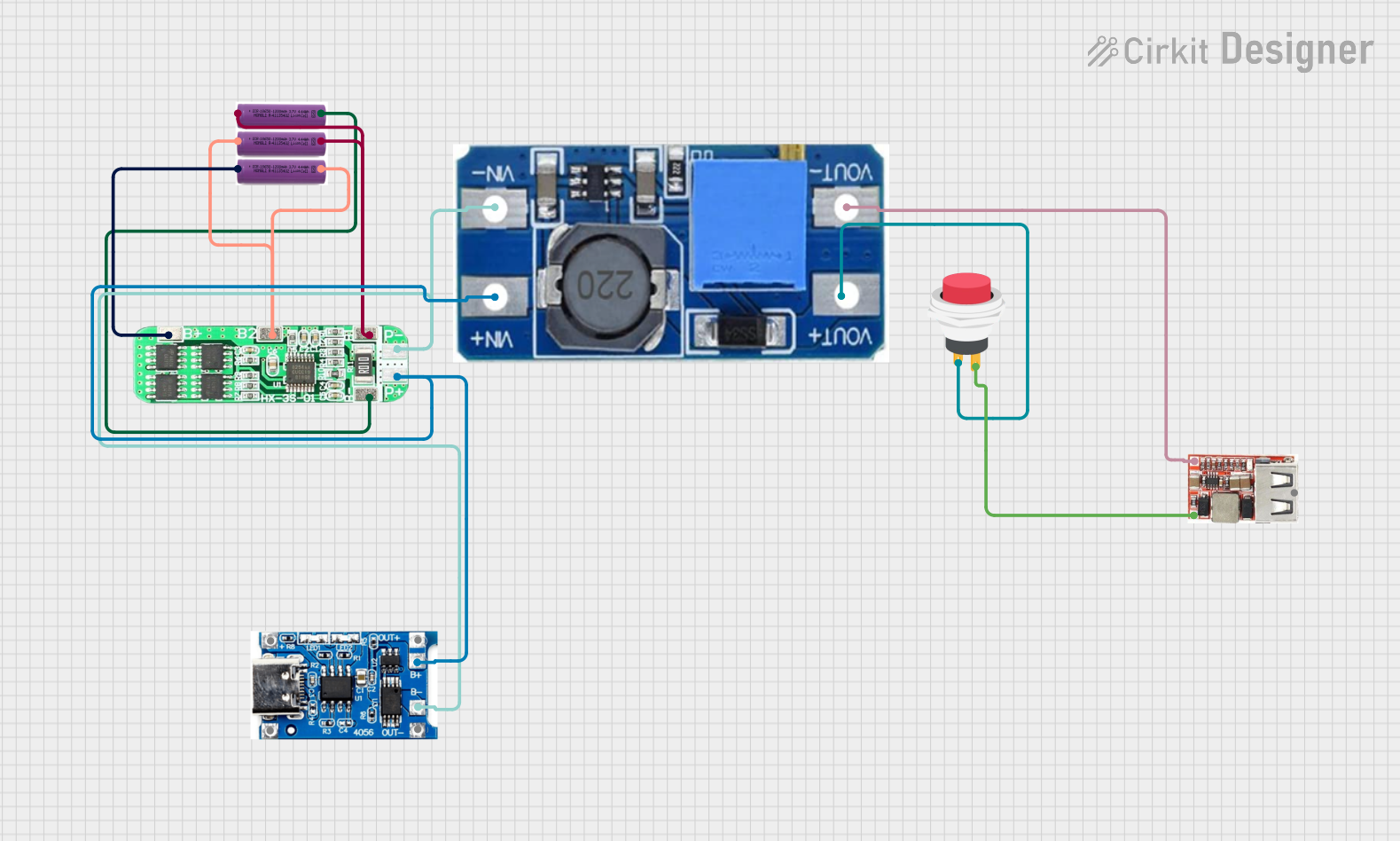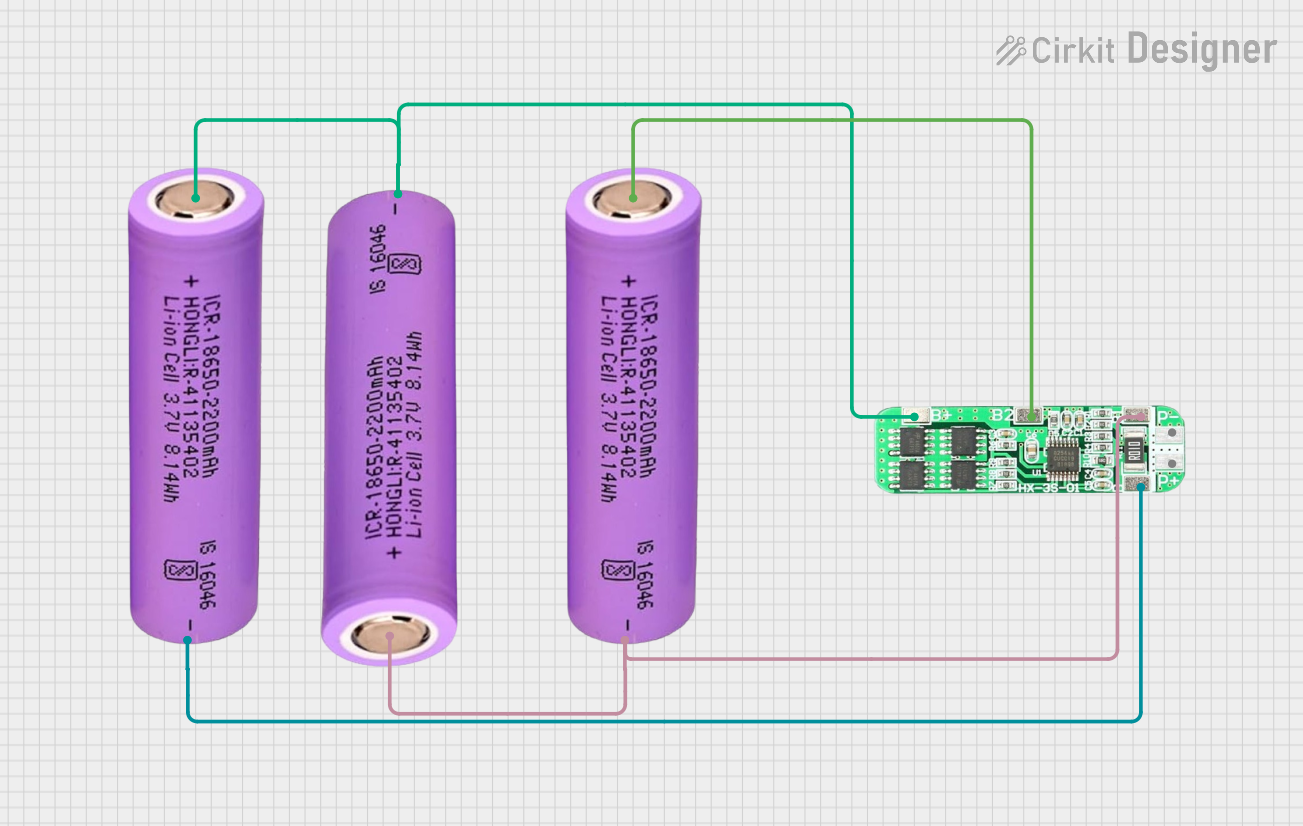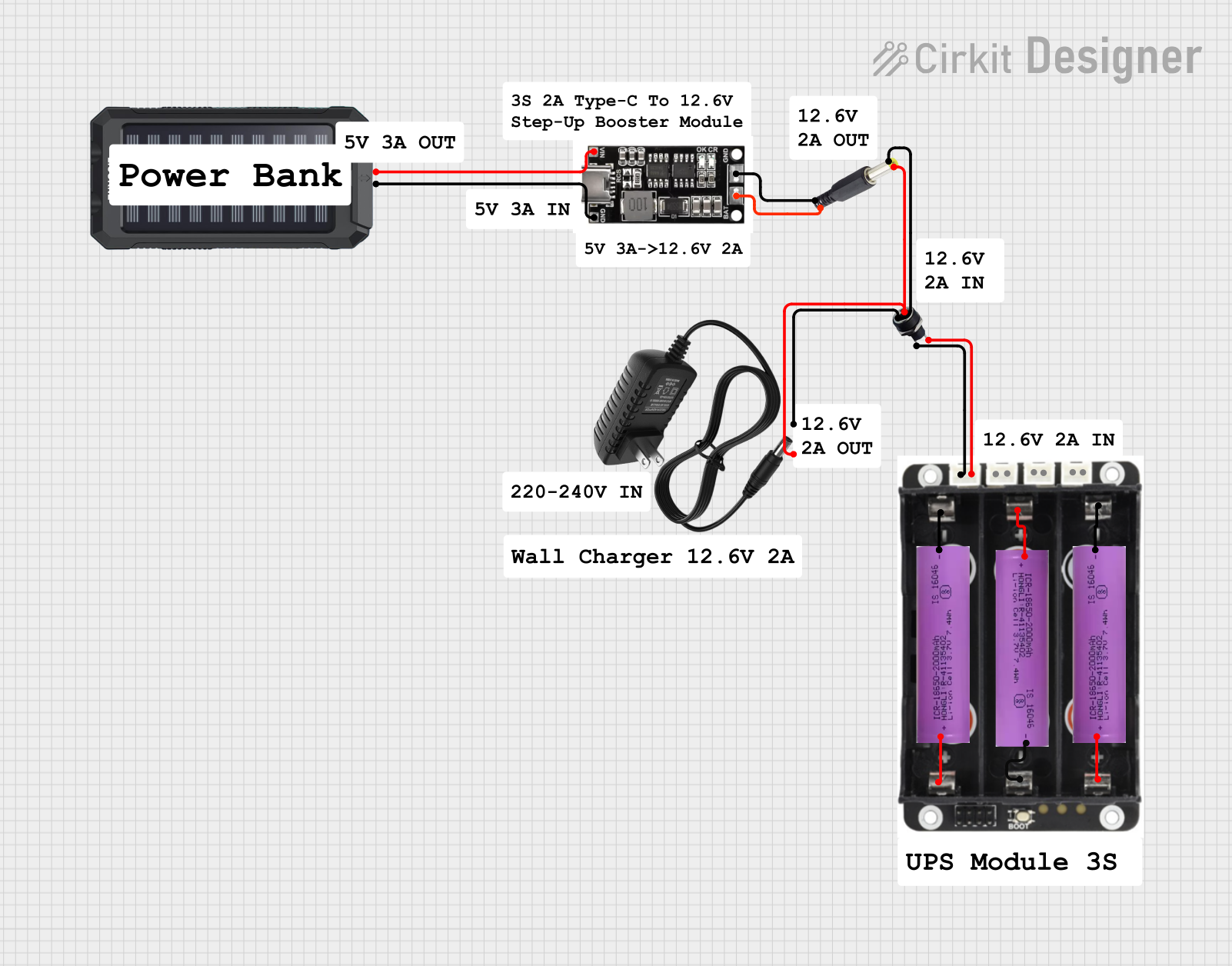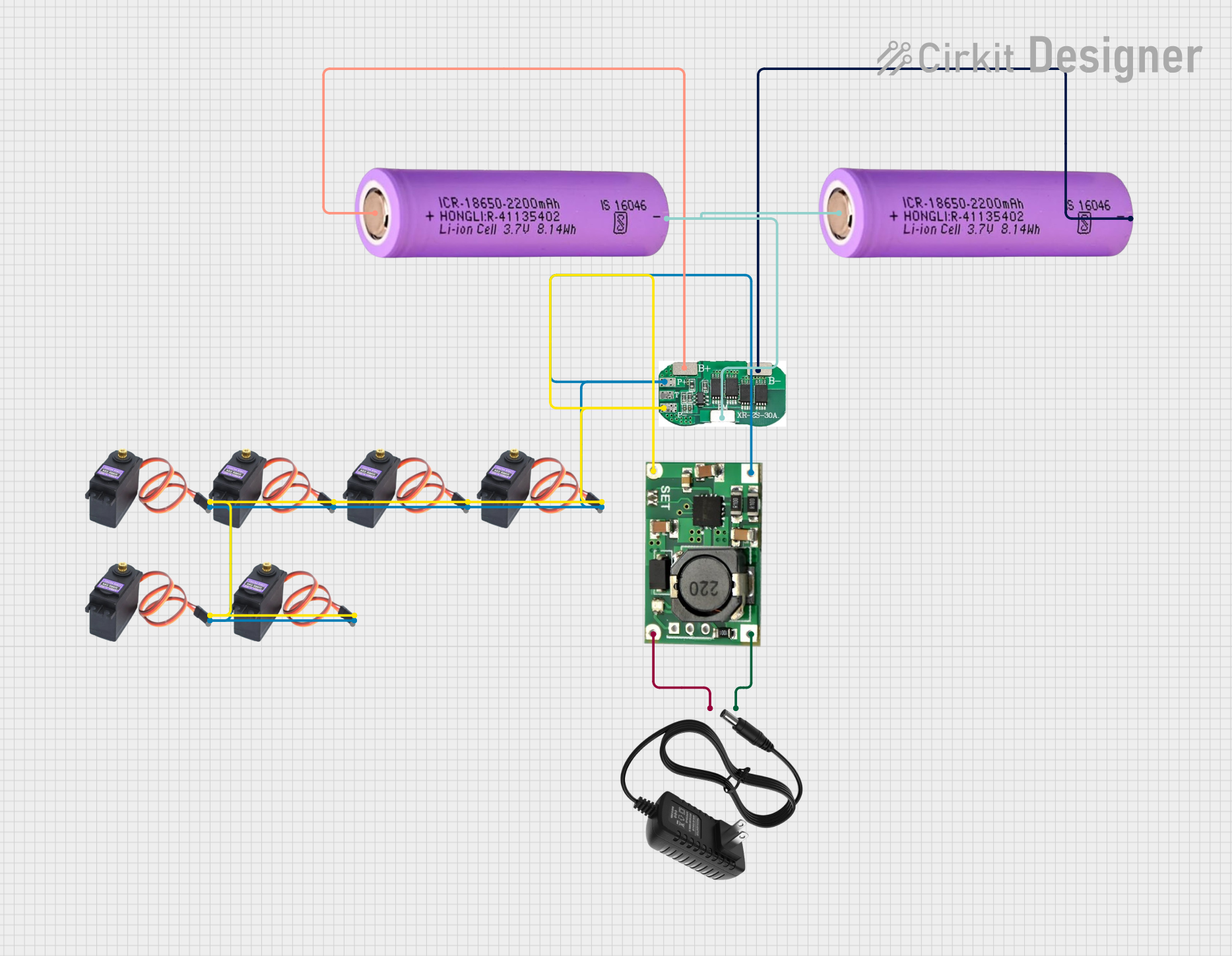
How to Use 3S LIPO BATTERY: Examples, Pinouts, and Specs

 Design with 3S LIPO BATTERY in Cirkit Designer
Design with 3S LIPO BATTERY in Cirkit DesignerIntroduction
The 3S LiPo Battery (Manufacturer: LIPO, Part ID: LIPO BATTERY) is a rechargeable lithium polymer battery with three cells connected in series, providing a nominal voltage of 11.1V. This type of battery is widely used in applications requiring high energy density and high discharge rates, such as RC vehicles, drones, and other high-power electronic devices.
Explore Projects Built with 3S LIPO BATTERY

 Open Project in Cirkit Designer
Open Project in Cirkit Designer
 Open Project in Cirkit Designer
Open Project in Cirkit Designer
 Open Project in Cirkit Designer
Open Project in Cirkit Designer
 Open Project in Cirkit Designer
Open Project in Cirkit DesignerExplore Projects Built with 3S LIPO BATTERY

 Open Project in Cirkit Designer
Open Project in Cirkit Designer
 Open Project in Cirkit Designer
Open Project in Cirkit Designer
 Open Project in Cirkit Designer
Open Project in Cirkit Designer
 Open Project in Cirkit Designer
Open Project in Cirkit DesignerTechnical Specifications
Key Technical Details
| Parameter | Value |
|---|---|
| Nominal Voltage | 11.1V |
| Cell Configuration | 3 cells in series (3S) |
| Capacity | Varies (e.g., 1000mAh, 2200mAh) |
| Discharge Rate | Varies (e.g., 20C, 30C) |
| Charge Voltage | 12.6V (4.2V per cell) |
| Discharge Cutoff | 9.0V (3.0V per cell) |
| Connector Type | XT60, Deans, JST, etc. |
| Dimensions | Varies by capacity |
| Weight | Varies by capacity |
Pin Configuration and Descriptions
| Pin Number | Pin Name | Description |
|---|---|---|
| 1 | Positive (+) | Positive terminal of the battery |
| 2 | Negative (-) | Negative terminal of the battery |
| 3 | Balance Lead | Connection for balancing the charge across cells |
Usage Instructions
How to Use the Component in a Circuit
Connecting the Battery:
- Ensure the battery is properly connected to the device using the appropriate connector (e.g., XT60, Deans).
- Connect the positive terminal of the battery to the positive input of the device.
- Connect the negative terminal of the battery to the negative input of the device.
Charging the Battery:
- Use a LiPo-compatible charger with a balance charging feature.
- Set the charger to the appropriate cell count (3S) and capacity (e.g., 2200mAh).
- Connect the balance lead to the charger to ensure even charging across all cells.
- Monitor the charging process to prevent overcharging.
Discharging the Battery:
- Avoid discharging the battery below 9.0V (3.0V per cell) to prevent damage.
- Use a battery monitor or low-voltage alarm to keep track of the battery voltage during use.
Important Considerations and Best Practices
- Safety: Always handle LiPo batteries with care. Avoid puncturing, short-circuiting, or exposing the battery to extreme temperatures.
- Storage: Store the battery at a voltage of around 3.8V per cell (11.4V for a 3S battery) in a cool, dry place.
- Balancing: Regularly balance charge the battery to ensure all cells maintain the same voltage.
- Inspection: Periodically inspect the battery for any signs of swelling, damage, or wear.
Troubleshooting and FAQs
Common Issues Users Might Face
Battery Not Charging:
- Solution: Check the charger settings to ensure they match the battery specifications (3S, correct capacity). Verify all connections are secure.
Battery Swelling:
- Solution: Discontinue use immediately. Swelling indicates potential damage or overcharging. Dispose of the battery safely.
Low Voltage Alarm Triggering Prematurely:
- Solution: Ensure the battery is fully charged before use. Check for any high-resistance connections in the circuit.
Uneven Cell Voltages:
- Solution: Perform a balance charge to equalize the cell voltages. If the issue persists, the battery may be aging or damaged.
FAQs
Q: Can I use a 3S LiPo battery with my Arduino UNO? A: Yes, but you will need a voltage regulator to step down the voltage to 5V or 3.3V, as the Arduino UNO operates at these lower voltages.
Q: How do I safely dispose of a LiPo battery? A: Discharge the battery completely, then take it to a designated battery recycling facility.
Q: What is the difference between a 20C and a 30C discharge rate? A: The discharge rate (C rating) indicates how quickly the battery can be discharged. A 30C battery can discharge faster than a 20C battery, providing more power for high-demand applications.
Example Code for Arduino UNO
If you are using a 3S LiPo battery with an Arduino UNO, you can monitor the battery voltage using a voltage divider and the analog input of the Arduino. Below is an example code snippet:
// Define the analog pin for voltage measurement
const int voltagePin = A0;
// Voltage divider resistors (adjust values as needed)
const float R1 = 10000.0; // 10k ohms
const float R2 = 10000.0; // 10k ohms
void setup() {
Serial.begin(9600); // Initialize serial communication
}
void loop() {
int sensorValue = analogRead(voltagePin); // Read the analog input
float voltage = sensorValue * (5.0 / 1023.0); // Convert to voltage
float batteryVoltage = voltage * ((R1 + R2) / R2); // Calculate battery voltage
Serial.print("Battery Voltage: ");
Serial.print(batteryVoltage);
Serial.println(" V");
delay(1000); // Wait for 1 second before next reading
}
Note: Ensure the voltage divider resistors are chosen to keep the input voltage within the Arduino's 5V range.
This documentation provides a comprehensive guide to understanding, using, and troubleshooting the 3S LiPo battery. Whether you are a beginner or an experienced user, following these guidelines will help you safely and effectively utilize this powerful energy source.